PROJECT WHITE WAGON: ADDING THE PIPE
In the last installment, we focused on preparing the rearend for installation. This time we are focused on the bracing already installed in the car which will play a crucial role in the cage we will soon build into the classic Chevrolet shell.
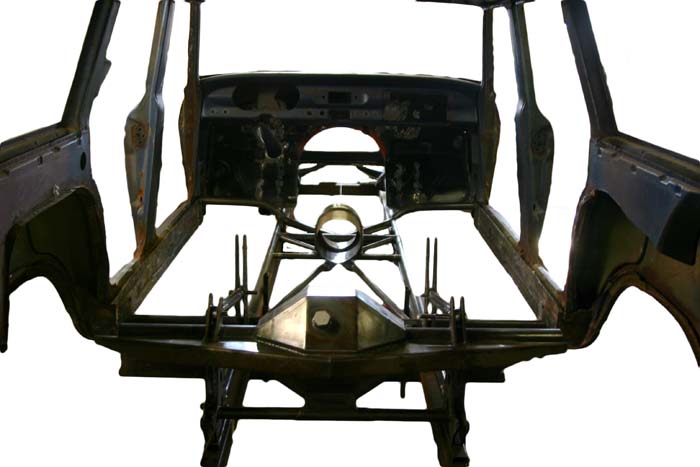
We are now beginning the initial stages of building the cage in the car.
Tom Lukans, of TL Race Cars, and the fabricator of our Project White Wagon, first installed the right and left frame rails (1 5/8-inch X .083 tubing from AEM) and attached them to the No. 1 bar per SFI specs (1.5 inch X .065).
Then we focused on the “outrigger” bar, and for those unfamiliar with the chassis builder lingo, this is essentially the driver and passenger side cross member bar.
“This bar is crucial because it gives us a place to incorporate the A-Pillar bar,” said Lukans, who has built sportsman-related chassis since 1990. “This bar serves two purposes. The NHRA requires us to use this bar as a driver and passenger side cross member/foot brace. We will also use it to brace the car’s A-Pillar. This primary function of this bar is for driver protection and structural integrity.”

In the last installment, we focused on preparing the rearend for installation. This time we are focused on the bracing already installed in the car which will play a crucial role in the cage we will soon build into the classic Chevrolet shell.
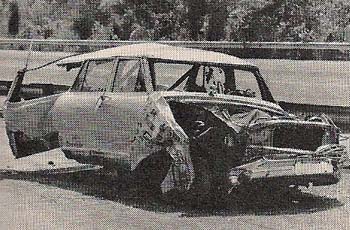
We are now beginning the initial stages of building the cage in the car.
Tom Lukans, of TL Race Cars, and the fabricator of our Project White Wagon, first installed the right and left frame rails (1 5/8-inch X .083 tubing from AEM) and attached them to the No. 1 bar per SFI specs (1.5 inch X .065).
Then we focused on the “outrigger” bar, and for those unfamiliar with the chassis builder lingo, this is essentially the driver and passenger side cross member bar.
“This bar is crucial because it gives us a place to incorporate the A-Pillar bar,” said Lukans, who has built sportsman-related chassis since 1990. “This bar serves two purposes. The NHRA requires us to use this bar as a driver and passenger side cross member/foot brace. We will also use it to brace the car’s A-Pillar. This primary function of this bar is for driver protection and structural integrity.”
In the event of a crash, this bar is intended to provide better foot and structure stability. The original White Wagon was built to different specs and in its demise, the car violently barrel rolled and was destroyed. One look at the crashed car and you’ll wonder how driver Gene Fulton escaped with only the injuries he did, which included a bruised heart.
The 6C bar, per SFI specs, is set back 16-inches while remaining within the SFI requirements. In the end, this bar will enable us to slide back the Liberty Equalizer transmission to service the 8-inch, RAM dual disc clutch.
“When you put things on the car you have to look two or three steps down the road how it's going to affect what you are doing plus the next two or three steps beyond,” said Lukans. “It’s forward planning to the max.”
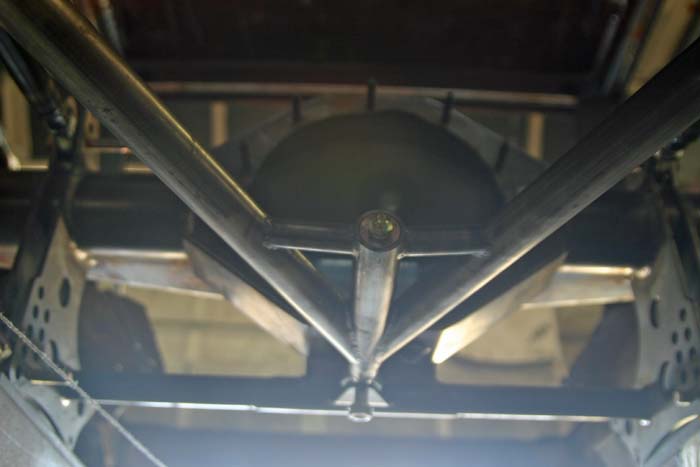
As we work our way back in fabricating the chassis, in addition to our dual drive shaft safety loops from Quartermax Race Cars, we begin to install the x-bracing which will not only make up the removable driveshaft safety tunnel but also continue to comprise the overall structure of the chassis.
The next point will be Project White Wagon’s wishbone.
“You have to be very careful with this point of the build,” cautioned Lukans. “The wishbone essentially keeps the rearend centered on the car and provides free movement for the rear suspension. The original White Wagon probably employed a simple track locator and no wishbone.”
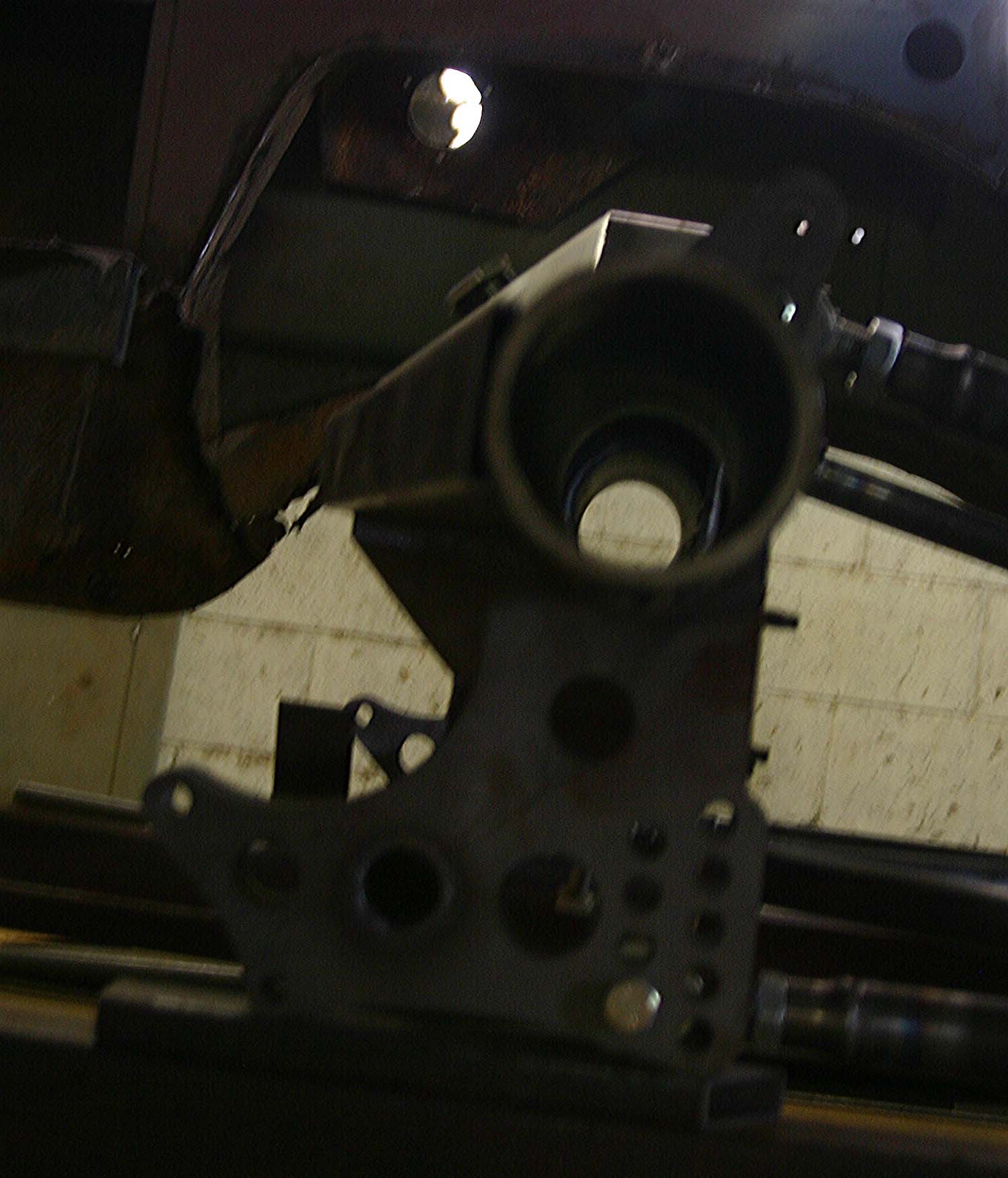
The original unit in the White Wagon might last until Project White Wagon leaves the starting line. Remember, this car will have almost 200 more horses than the original car and the tracks are much better.
The wishbone we’ve installed from Quartermax Race Cars meets today’s standards and then some.
“Rick Jones has gone the extra mile on this in his construction kit, that the slide tube is actually a little thicker than everybody else’s and the welding to it and stabilization of it makes it a whole lot nicer,” explained Lukans. “Not only that, it has a grease fitting to keep the dirt out and the center shaft is bore drilled. This will extend the life of this component long term. You need this kind of longevity when you look at the abuse this section is expected to endure.”
What kind of abuse will the wishbone take?
This is the same kind of unit Rickie Jones runs in his Pro Nitrous entry.
The original White Wagon had the right idea with Fulton’s tractor links but the wrong componentry. It was essentially a three-link combination from a Ford tractor and did the trick as well as a four-link of today could have performed on the same prepared track.
The four-link brackets we have installed, using the Quartermax pro assembly, has a bigger upper and lower upper bar to absorb the 420 foot pounds of torque.
“In today's racing world with most cars using better engines, creating more torque, better traction and tires, you’re going to find out quickly that you will have a certain amount of deflection you would get in the upper and lower four-link bar,” explained Lukans. “That is where we went to the bigger tube to stabilize any deflection during the car’s launch.”
In chassis builder lingo, deflection is when the four-link bar bends under a load, or in drag racing terminology, a launch.
Our top and bottom bars will measure 1.5 inch diameter X .095 wall thickness.
With the general structure assembly in place, we need to focus now on incorporating more of the body, or in this case, steel shell, into the fabrication.
When we drug this Chevy II Wagon from Minton’s Junkyard, to our shop, after cutting the tree growing in the engine bay, we had no idea how much damage the Carolina humidity and elements had delivered to the car. Initial inspection showed a lot of rust.
However, when we took the saws-all to the non-essential areas, it became apparent this old wagon has stood the test of time.
“I thought at first, I had to be out of my mind when attempting building this car,” said Lukans. “The bodylines and main structure were in very good shape and structural sound. Sometimes when you cut away the rough edges of something, you can really see the real beauty of the core. Anyone can build a body in white, but when you revived a car which has been left for dead, give it new life … you will see a project that goes beyond rewarding.”
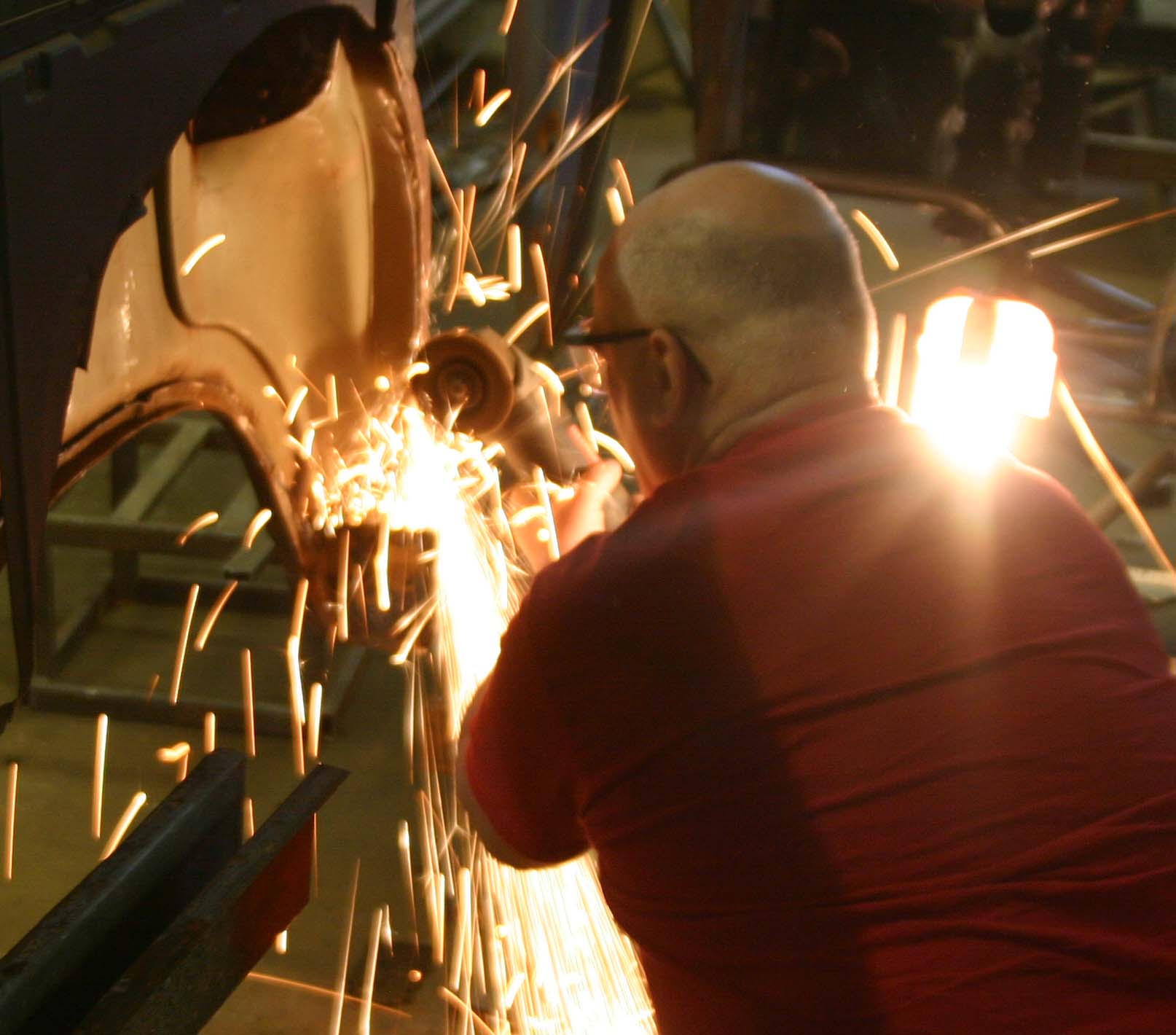
However, when we took the saws-all to the non-essential areas, it became apparent this old wagon has stood the test of time.
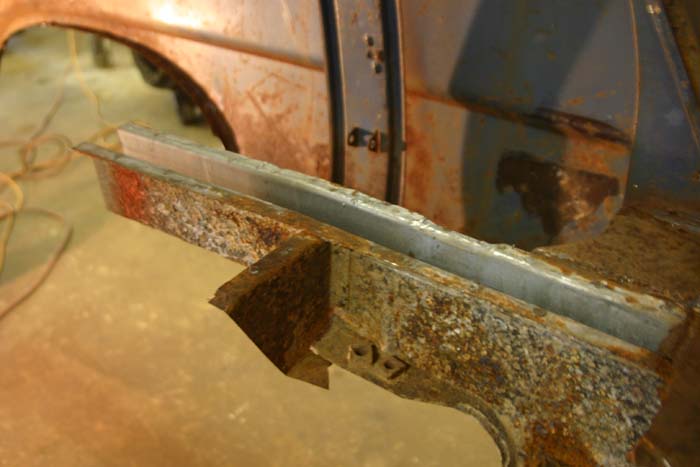
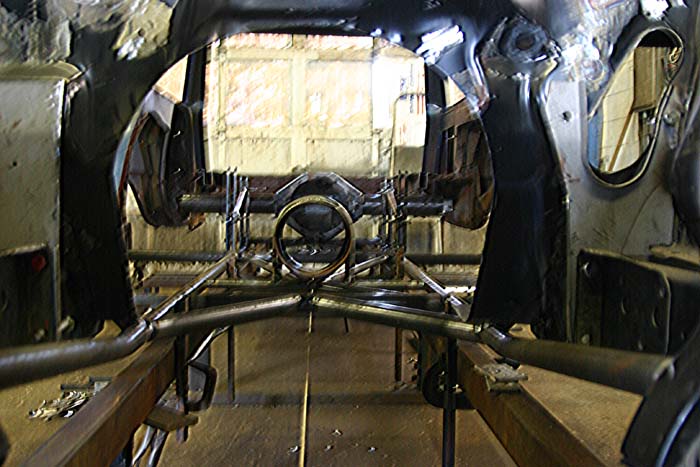
PAST INSTALLMENTS
* Part 1, Outlining The Project
* Part 2, Getting The Car on The Jig
* Part 3, Preparing for the Four-Link
* Part 4, Preparing the Cylinder Heads
* Part 5, Project Gains A Purpose
* Part 6, Shocking the Wagon
* Part 7, A Real Clutch Player
* Part 8, Nova Body Parts Done Right
* Part 9, Space Age Intake Meets The Basket Case
* Part 10, Dart Aftermarket Blocks Poised to Fly in Stk/SS
* Part 11, We Are Rolling Again
* Part 12, Now That's A Rearend
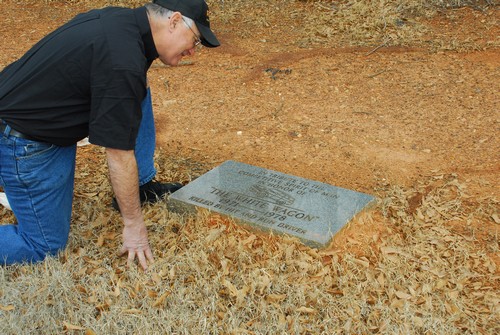 PROJECT WHITE WAGON SUPPORTERS
PROJECT WHITE WAGON SUPPORTERS
TL Race Cars (864) 427-5269
Fluid Power Specialties (864) 599-1118
Minton's Wrecker Service (864) 474-2581
Fulton Competition
PART SUPPLIERS
A.E.D. Motorsports Products (tubing)
Applied Racing Technologies (A.R.T)
Aeromotive Inc. (fuel system)
Autometer Guages (tech, engine gauges)
Bill Miller Engineering (rods, pistons)
Browell Bellhousings (bellhousing)
CFE Heads (cylinder heads, intake)
CFM Composites (seats)
Carson's Nut-Bolt and Tool
Comp Cams (camshaft)
Dart Engineering (Engine Block)
Flatout Gaskets (engine gaskets)
Hedman Headers (headers)
I.R.C. (wheelie bar wheels, bracketry)
Jegs Mail Order (misc.)
J&W Nova Parts (body panels and body sheetmetal)
Liberty's Transmissions (Transmission, Gears)
Matco Tools - (tools, tool box)
Mickey Thompson Tires & Wheels (front tires, slicks)
Moroso Performance (valve covers)
QA-1 (Rod Ends)
Quartermax Racing & Chassis Components (suspension, chassis components, axles)
Ram Clutches
Santhuff Shocks (front, rear shocks)
Simpson Safety - (Helmet, Firesuit)
Strange Engineering (Axles, Rearend companents)
Weld Racing (front, rear wheels)
Winberg Crankshafts (crankshaft)




































